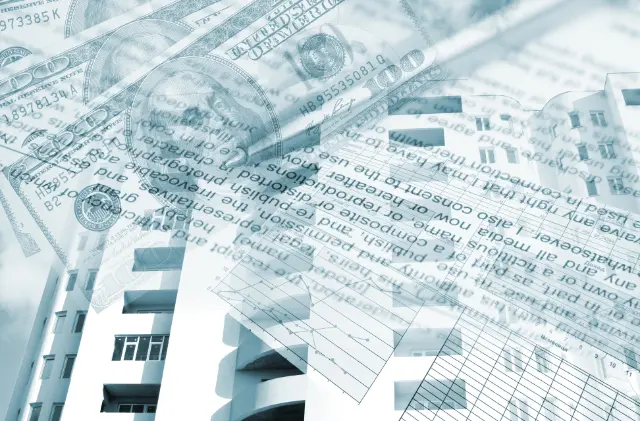Overcoming Compliance Challenges with Automated Precision
In today’s rapidly evolving regulatory landscape, the lending industry faces a daunting task in ensuring compliance. Manual compliance reporting processes are not only time-consuming but also prone to errors, increasing the risk of non-compliance and hefty penalties.
Compliance Reporting Automation: A Game-Changer for the Lending Industry
To address these challenges, forward-thinking lenders are embracing the power of automation. By leveraging Python, AI, and cloud-based solutions, lenders can streamline their compliance reporting processes, enhancing both efficiency and accuracy.

Python, AI, and Cloud: The Dynamic Trio for Compliance Reporting Automation
Unattended Bots: Automating Compliance Reporting Tasks
Python’s versatility and power shine in the development of unattended bots for compliance reporting automation. These bots can seamlessly execute repetitive and time-consuming tasks, such as:
- Generating compliance reports
- Maintaining audit trails
- Tracking regulatory changes
- Updating policies and procedures
Attended Bots: Empowering Human-Bot Collaboration
Attended bots take automation a step further by collaborating directly with human users. Built with Python, these bots offer a high degree of customization, enabling tailored solutions for specific compliance reporting needs. Attended bots can:
- Assist users in data entry and validation
- Provide real-time guidance on compliance requirements
- Automate tasks based on user input
Cloud Platforms: Orchestrating Automation with Power and Scale
Cloud platforms outshine traditional RPA/workflow tools as automation orchestrators, offering:
- Extensive features and capabilities
- Scalability to handle large volumes of data
- Integration with a wide range of applications
AI: Enhancing Accuracy and Handling Edge Cases
AI techniques, such as image recognition, natural language processing (NLP), and generative AI (Gen AI), enhance the accuracy and capabilities of compliance reporting automations. AI can:
- Extract data from complex documents, such as loan agreements and regulatory filings
- Identify and classify regulatory changes
- Generate natural language summaries of compliance reports
- Handle edge cases and exceptions that manual processes often miss

Building the Compliance Reporting Automation with Python and Cloud
Sub-Processes and Automation Steps
The compliance reporting automation process can be broken down into several sub-processes:
- Data Extraction: Python scripts can be used to extract data from various sources, such as loan applications, regulatory filings, and internal databases.
- Data Validation: Cloud-based data validation services can ensure that the extracted data is accurate and complete.
- Report Generation: Python can generate compliance reports in various formats, such as PDFs, spreadsheets, and dashboards.
- Audit Trail Maintenance: Cloud platforms provide secure storage for audit trails, ensuring compliance with regulatory requirements.
- Regulatory Change Tracking: Python scripts can monitor regulatory websites and databases for changes, and automatically update compliance policies and procedures.
Data Security and Compliance
Data security and compliance are paramount in the lending industry. Python and cloud platforms offer robust security features, such as encryption, access control, and audit logging, to ensure the confidentiality and integrity of sensitive data.
Python vs. No-Code RPA/Workflow Tools
While no-code RPA/workflow tools offer a low-code/no-code approach to automation, they often lack the flexibility and customization capabilities of Python. Python provides greater control over the automation process, allowing for the development of tailored solutions that meet the specific needs of the lending industry.
Algorythum’s Approach: Empowering Clients with Python Expertise
Algorythum takes a different approach to automation, focusing on Python development instead of relying on pre-built RPA tools. This approach has proven successful, as clients have expressed dissatisfaction with the performance and limitations of off-the-shelf automation platforms. Python’s versatility, power, and customization capabilities enable Algorythum to deliver robust and scalable compliance reporting automation solutions tailored to the unique needs of the lending industry.

The Future of Compliance Reporting Automation
The convergence of Python, AI, and cloud computing is rapidly transforming the landscape of compliance reporting automation. As these technologies continue to evolve, we can expect to see even more innovative and powerful solutions emerge.
Potential Future Enhancements
Future extensions to the proposed solution could include:
- Real-time compliance monitoring: AI-powered bots could continuously monitor systems and data for potential compliance violations, enabling proactive risk management.
- Automated regulatory interpretation: Machine learning algorithms could analyze complex regulatory documents and provide clear and concise summaries, reducing the burden on compliance teams.
- Blockchain integration: Blockchain technology could provide a secure and immutable audit trail, further enhancing compliance and transparency.
Subscribe to our newsletter to stay up-to-date on the latest trends and advancements in compliance reporting automation. Contact our team today for a free feasibility assessment and cost estimate for your custom automation requirements. Together, we can unlock the full potential of compliance reporting automation and drive efficiency, accuracy, and compliance in your lending operations.

Algorythum – Your Partner in Automations and Beyond
At Algorythum, we specialize in crafting custom RPA solutions with Python, specifically tailored to your industry. We break free from the limitations of off-the-shelf tools, offering:
- A team of Automation & DevSecOps Experts: Deeply experienced in building scalable and efficient automation solutions for various businesses in all industries.
- Reduced Automation Maintenance Costs: Our code is clear, maintainable, and minimizes future upkeep expenses (up to 90% reduction compared to platforms).
- Future-Proof Solutions: You own the code, ensuring flexibility and adaptability as your processes and regulations evolve.









